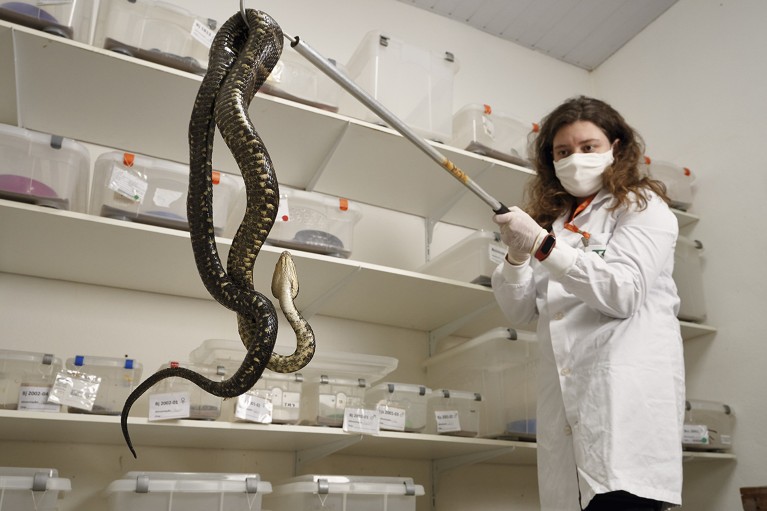I study snakes in Brazil’s Ribeira Valley, an area where snake bites are very common. I focus mainly on the venomous lancehead (Bothrops jararaca), which I am holding here. It is responsible for most of the 26,000 recorded snake bites in Brazil each year.
After my undergraduate biology degree at the Federal University of São Carlos, I spent two years at the Butantan Institute in São Paulo, studying snakes that live in São Paulo’s rivers and urban parks. I then did a master’s degree at São Paulo State University, researching the reproductive biology of the bushmaster (Lachesis muta) — one of the largest venomous snakes in the Americas and one of the few snakes that show a form of parental care. It lays its eggs in underground burrows and remains curled around them for long periods of time to keep them warm and protected.
When I was 12 years old, I visited the Acqua Mundo aquarium on the coast of São Paulo and fell in love with a beautiful, giant, albino ball python (Python regius). Brazil has more than 400 snake species. At first, I just thought that snakes were pretty, but as I learnt about and worked with them, I became curious about how their environment influences their movement and activities.
I’m now planning to attach accelerometers to snakes. These small data loggers can monitor fine-scale body movements and postures. Because many of the snakes are venomous, it is dangerous to work with them. But we learn to respect them and understand their defence behaviours, and two people always work together when handling them.
One goal of my project is to learn more about interactions with humans, aiming to inform policies to mitigate snake bites. The biggest threat to snakes is habitat loss, which has been made worse by Brazil’s current environment policies, which encourage the clearing of land for farming.


 Virus detective: searching for Zika, dengue and SARS-CoV-2
Virus detective: searching for Zika, dengue and SARS-CoV-2
 Danger zone
Danger zone
 Four-legged fossil snake is a world first
Four-legged fossil snake is a world first







